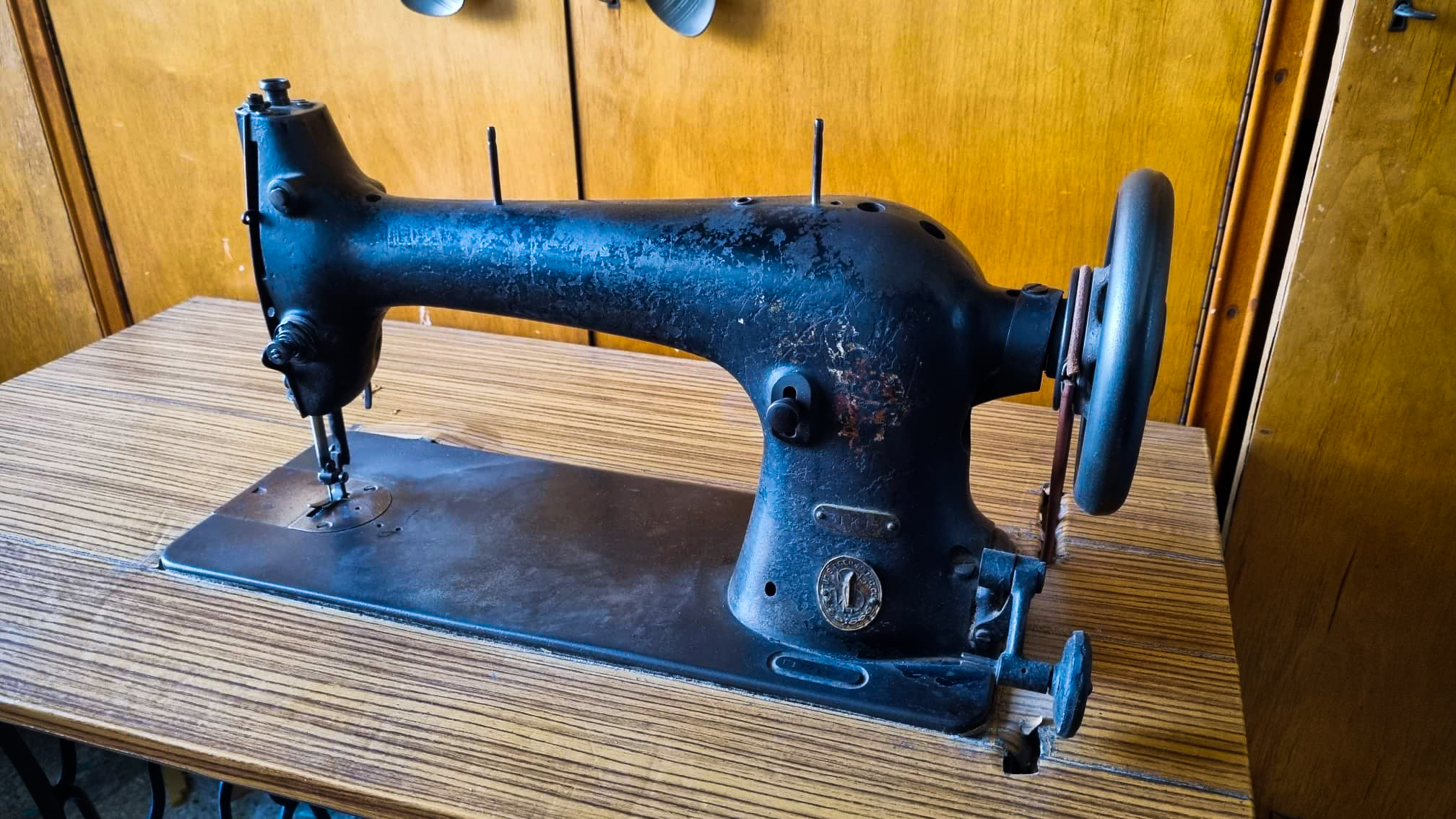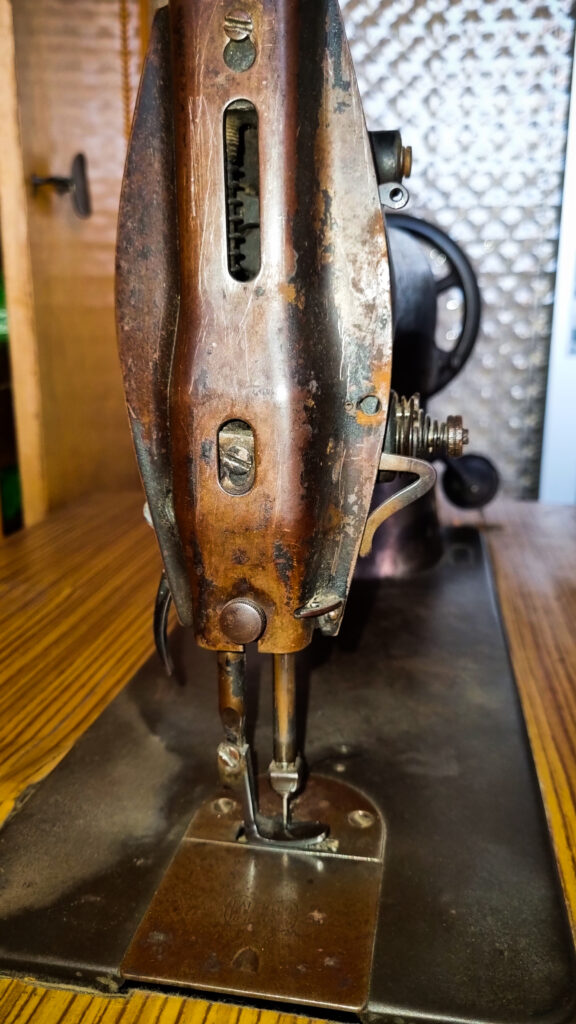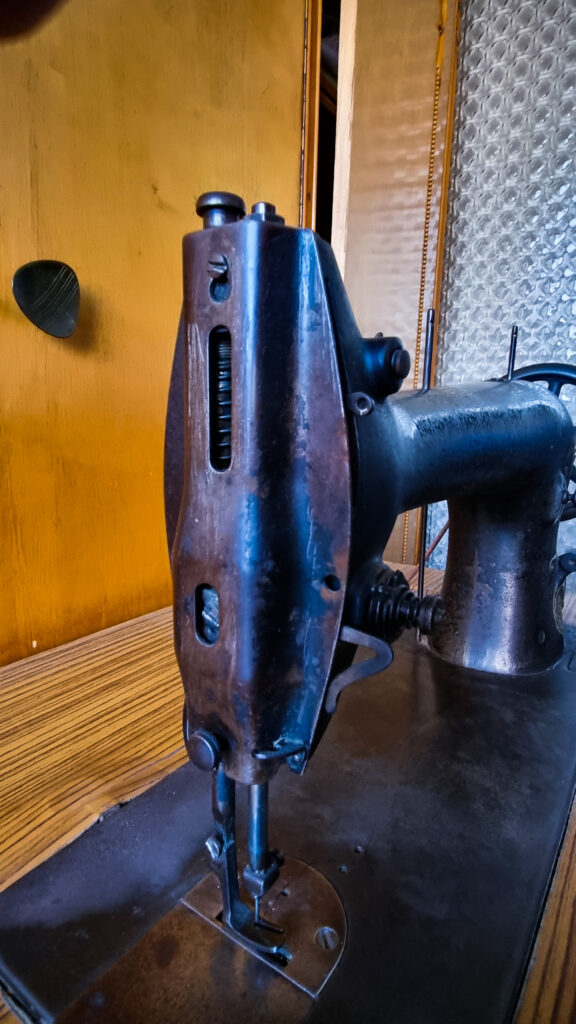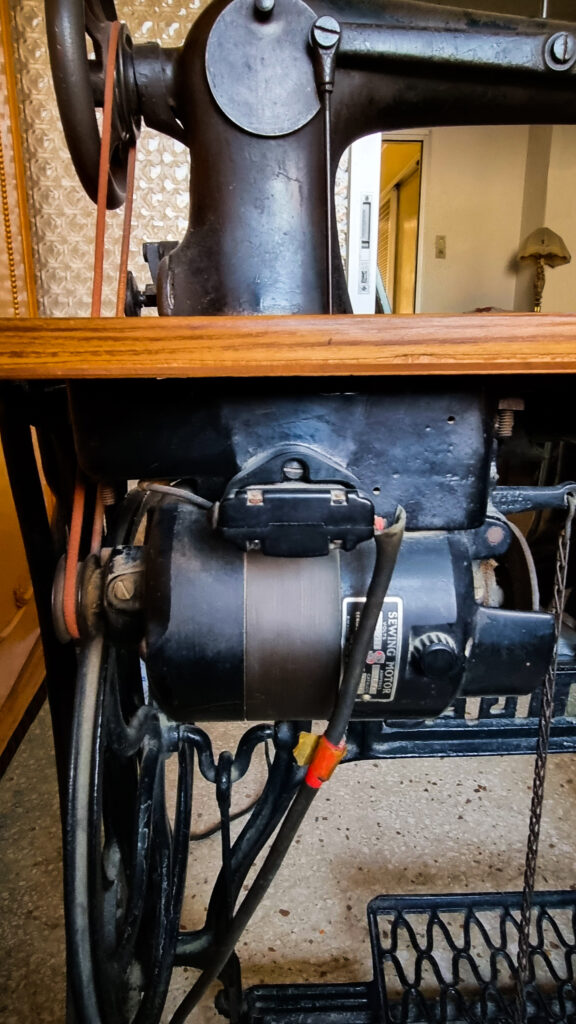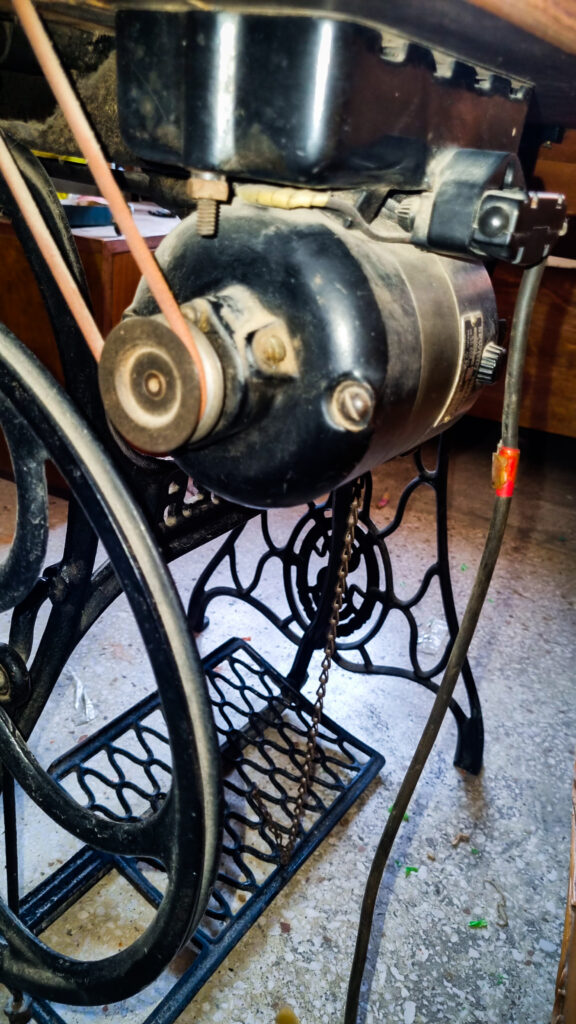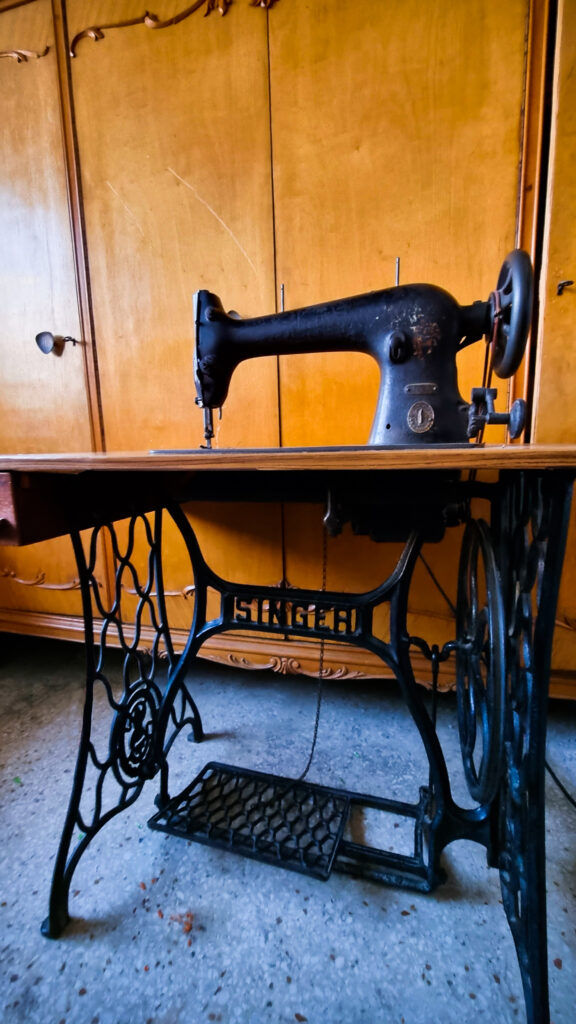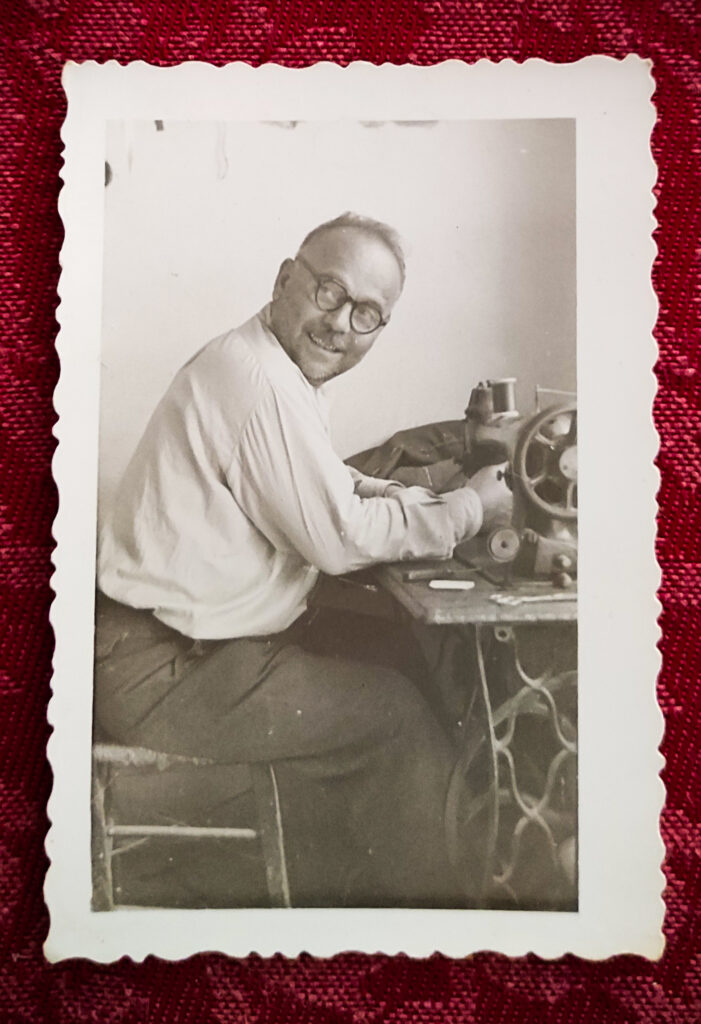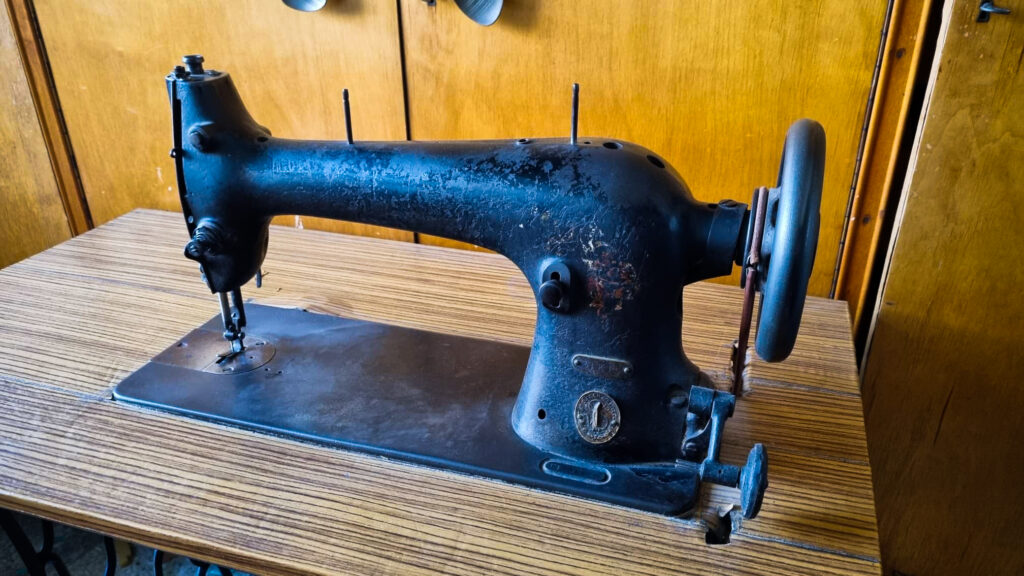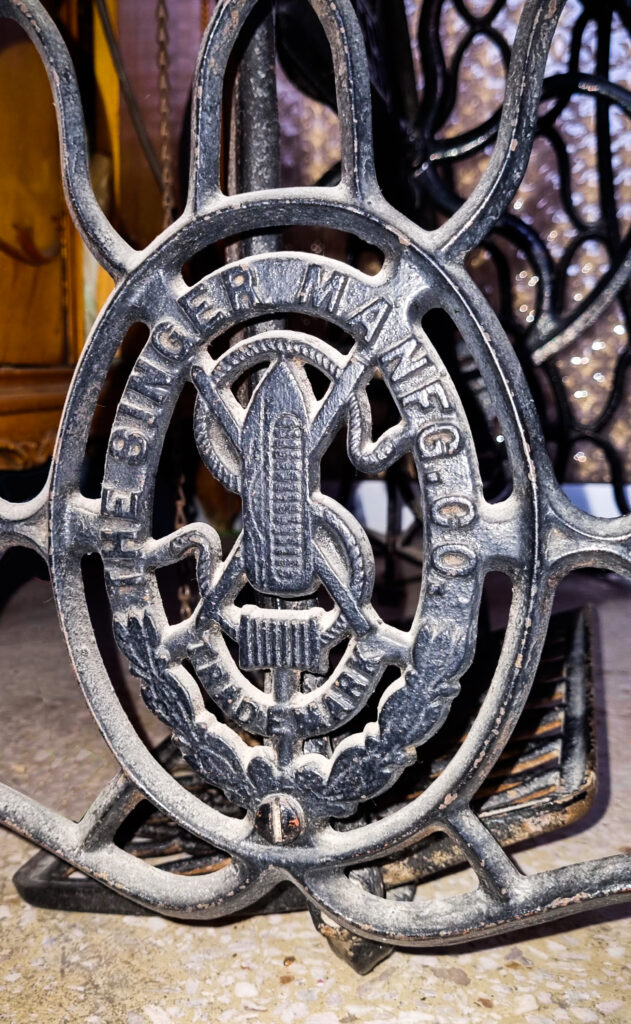Ilias Vasileiadis was born in Pontus in 1909. In 1918, when he was just 9 years old, he was orphaned; his parents and siblings all died of the Spanish flu. He moved in with his aunt, Rachil, who was a seamstress. Together, they found themselves displaced from Pontus and forced to move around the Russian coast of the Black Sea, settling initially in Sochum (Sukhumi) and then in Vatum (Batumi). Ilias started working as a tailor and soon became the owner of a Singer sewing machine. In Vatum, he met Elisavet Dimitriadou from Kelonsa, a small town outside Sourmena (Sürmene). Elisavet’s family, who were renowned knife makers, had followed the exact same route as Ilias at about the same time. Ilias and Elisavet got married in May, 1932, in Vatum and had their first daughter, Rachil, in 1934. Their second daughter, Sonia, was born in 1937.
The family arrived in Piraeus in 1938 and settled in a makeshift shack on Pontou Street, in Drapetsona. The Singer sewing machine was among the few belongings they brought over with them. Ilias Vasileiadis opened a small tailor shop on Eleftheriou Venizelou Street in Drapetsona and converted his manual sewing machine into an electric one. That’s how he managed to survive his new circumstances and support his family, which had acquired two new members since they arrived in Greece. Soon he became well-known for his work, not only in Drapetsona, but also in the wider area and everyone wanted to have their clothes tailored by ‘Mr. Ilias’.
His sewing machine has been decommissioned for years and is now in the possession of his granddaughter, Vasiliki Tsouchnika; a precious family heirloom which secured the livelihood of her mother’s family for decades. Grandma Liza and Grandpa Ilias often spoke about their life in Vatum, how they met and got married, but never about their flight, their journey, or their first years in Greece. In a way, the Singer sewing machine accompanied them throughout their life and for Vasiliki, it is a part of her family history and a reminder of the double displacement they had to endure.
